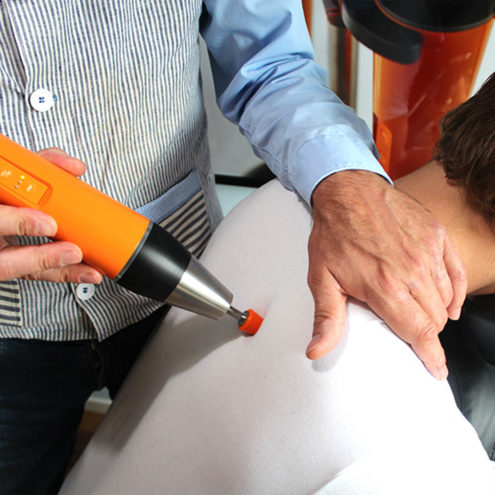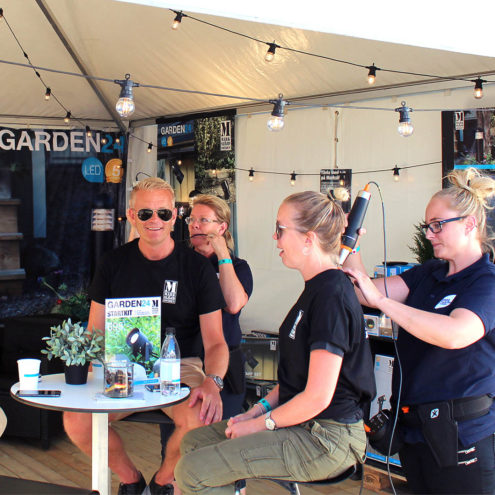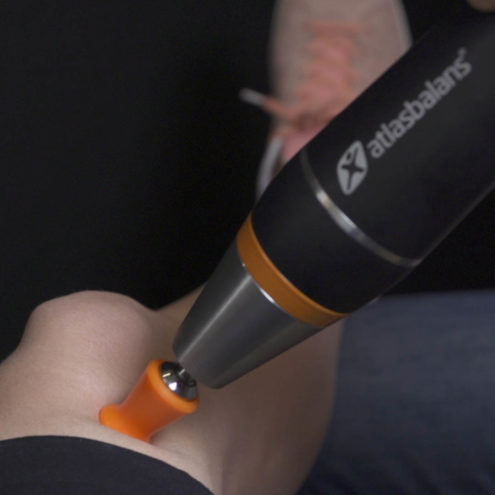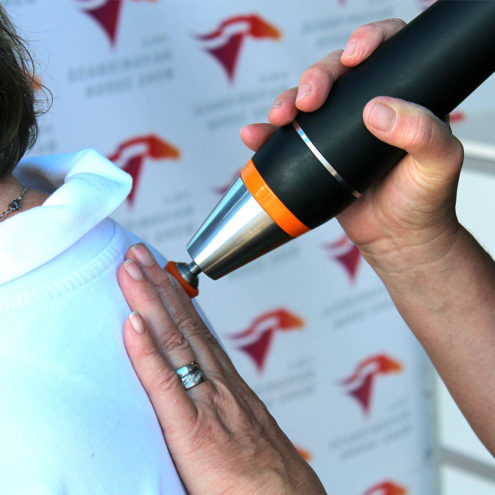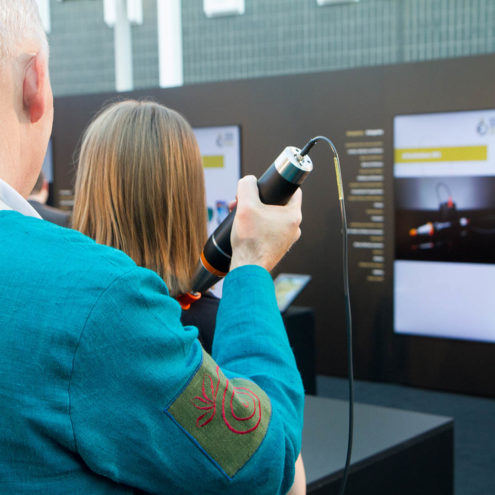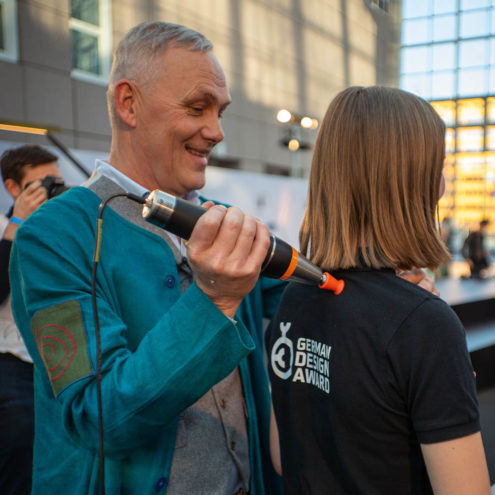Anatomy of the shoulder blade
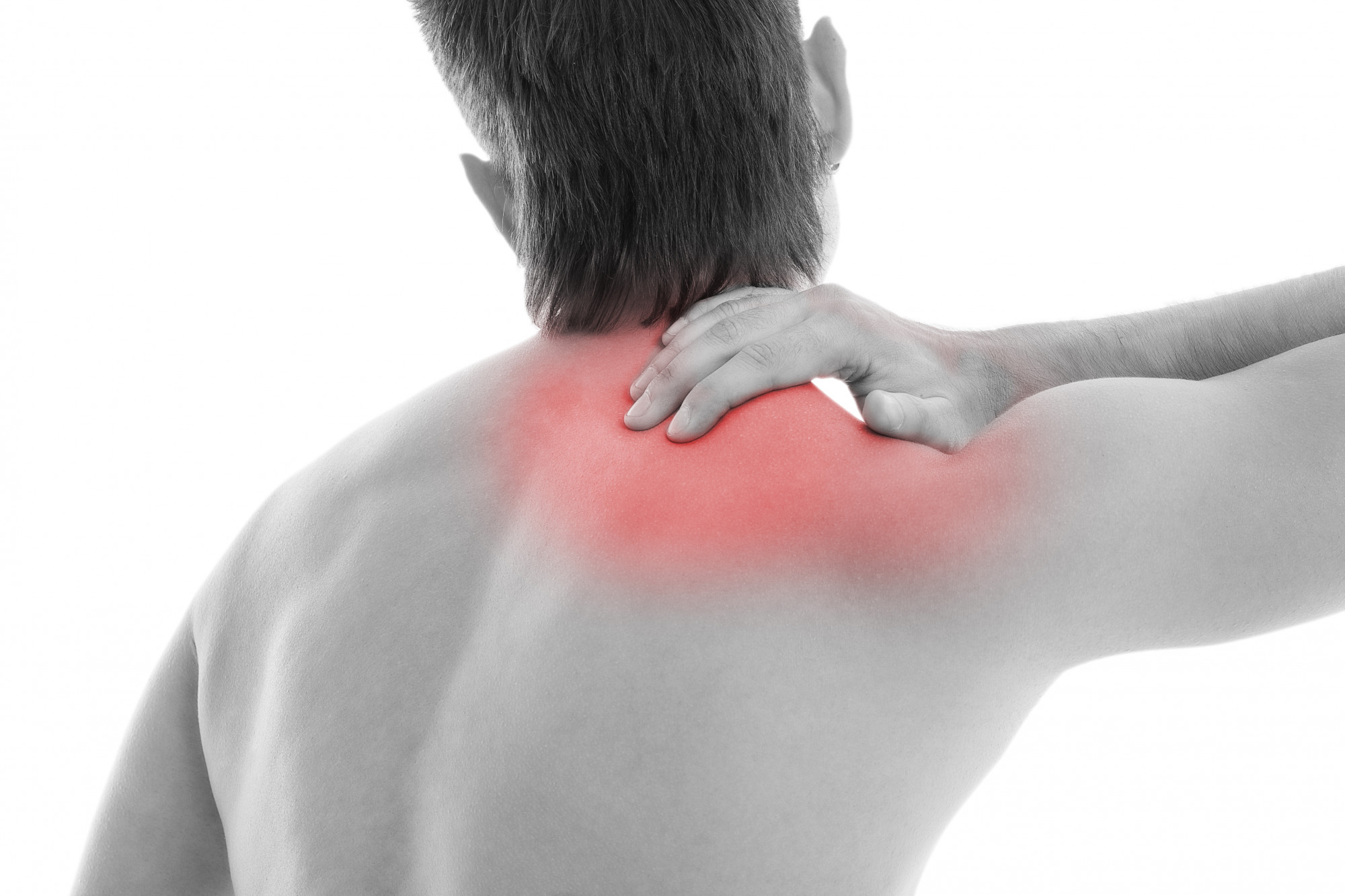
What is the scapula made of?
The scapula is a complex flat bone that plays a crucial role in the mobility and stability of the shoulder. The scapula acts as a connection between the upper arm (humerus) and the clavicle (clavicle) and serves as the attachment for many muscles that allow movement and stability of the shoulder.
Anatomical structures
The shoulder blade is made up of several important structures that contribute to its function:
Spina scapulae: a prominent bony ridge that runs across the back of the scapula and divides it into two regions: the fossa supraspinata (above the spina scapulae) and the fossa infraspinata (below the spina scapulae). This ridge acts as an attachment for muscles and provides structural support.
Acromion: A protruding bony structure at the top of the scapula that meets the clavicle to form the acromioclavicular (AC) joint. The acromion is an important point of attachment for ligaments and muscles and helps form the roof over the shoulder joint.
Processus coracoideus: A hook-shaped projection on the front of the scapula that serves as an attachment for several important muscles and ligaments, including the pectoralis minor, coracobrachialis, and biceps brachii (short head).
Cavitas glenoidalis: A shallow cavity that acts as a socket for the head of the humerus, forming the glenohumeral (shoulder) joint. The cavitas glenoidalis is covered by a labrum, which helps to deepen the cavity and improve the stability of the joint.
Muscles and tendons
Several important muscles and tendons are attached to the scapula and play a crucial role in the movement and stability of the shoulder:
Rotator cuff muscles: These four muscles (supraspinatus, infraspinatus, teres minor and subscapularis) surround the shoulder joint and stabilize it by holding the head of the humerus in the glenoid cavity. The rotator cuff also allows for inward and outward rotation and lifting of the shoulder.
Trapezius: A large, superficial muscle that extends from the neck to the middle of the back. It is divided into three parts (upper, middle and lower) that help move and stabilize the scapula by raising, contracting and lowering it.
Rhomboideus major and minor: These muscles extend from the spine to the scapula and help pull it inwards and upwards, stabilizing the scapula against the rib cage.
Levator scapulae: A muscle that lifts the scapula, contracting and helping to turn it inwards. It extends from the transverse process of the neck to the upper part of the scapula.
Serratus anterior: A muscle that attaches along the anterior surface of the scapula and ribs. It helps hold the scapula against the rib cage and allows for forward and upward movement of the scapula.
The joints around the shoulder blade
The shoulder blade is involved in several joints that allow the movement and stability of the shoulder:
Glenohumeral joint: The main shoulder joint formed by the cavitas glenoidalis of the scapula and the head of the humerus. It is a ball joint that allows great mobility in several directions, including flexion, extension, abduction, adduction, horizontal rotation and circumduction.
Acromioclavicular joint (AC joint): Connects the acromion of the scapula to the clavicle and plays an important role in scapular mobility and stability. The AC joint allows small rolling movements that contribute to the overall mobility of the shoulder.
Sternoclavicular (SC) joint: Connects the clavicle to the sternum and is important for arm and shoulder movement. The sternoclavicular joint allows for raising, lowering, forward and backward movement, and rotation of the clavicle, which affects shoulder mobility.
Why do problems with the scapula occur?
Problems with the scapula can occur for several reasons, including injury, overload, poor posture and anatomical variations.
Read also: Scapular pain – Causes, symptoms and treatment.
Injuries and congestion
Injuries and overuse are common causes of scapular problems:
Rotator cuff injuries: Injuries to the rotator cuff muscles or tendons, such as tears or inflammation, can cause pain and movement limitations. These injuries often occur during repetitive movements or excessive use of the shoulder, such as in sports like swimming, tennis or throwing.
Shoulder dislocation: A displacement of the head of the humerus from the glenoid cavity can cause damage to surrounding tissues and lead to pain and instability. Dislocations can occur in trauma or falls where the arm is pulled forcefully outwards or backwards.
Overuse injuries: Repeated movements, especially in sports such as swimming, tennis and throwing, can lead to inflammation and pain around the scapula. Overuse injuries can also occur from prolonged work with the arms above the head or repeated lifting.
Poor posture and muscle weakness
Poor posture and muscle weakness can also contribute to scapular problems:
Forward leaning posture: A forward leaning posture, where the shoulders are rolled forward and the thoracic spine is flexed, can lead to muscular imbalance and increased stress on the scapula and its muscles. This posture can cause overstretching of some muscles and shortening of others, leading to pain and discomfort.
Muscle weakness: Weak muscles, especially in the rotator cuff and serratus anterior, can lead to instability and movement problems in the scapula. Muscle weakness can also make it more difficult to maintain correct posture, increasing the risk of injury and pain.
Anatomical variations
Some individuals may have anatomical variations that increase the risk of scapular problems:
Bone spurs: Growths of bone on the scapula can cause irritation and inflammation of the surrounding soft tissues. These growths can occur as a result of arthritis or prolonged overuse.
Scapula dyskinesia: An abnormal movement or position of the scapula during arm movements can lead to pain and impaired function. Dyskinesia can occur as a result of muscle weakness, imbalances or neurological problems.
What are the symptoms of scapular problems?
Problems with the scapula can lead to different symptoms, depending on the underlying cause and the extent of the problem.
Pain and discomfort
Local pain: Pain may be felt directly above or around the scapula, often as a deep, throbbing discomfort. The pain may be constant or occur with specific movements.
Radiating pain: The pain may radiate to the neck, shoulder or arm and worsen with movement or exertion. This may indicate a nerve impingement or inflammation that spreads to surrounding tissues.
Resting and nocturnal pain: Pain can occur at rest or during the night, especially if the affected side is lying down. This can make it difficult to sleep and lead to further discomfort.
Limited mobility and stiffness
Movement restrictions: Problems with the scapula can lead to difficulties in moving the arm freely, especially when lifting, rotating or stretching. This can affect daily activities such as getting dressed, lifting objects or performing work tasks.
Stiffness: Stiffness in the scapula and shoulder can limit range of motion and make it difficult to perform daily activities. Stiffness can be particularly pronounced in the morning or after periods of inactivity.
Impairment and weakness
Muscle weakness: Reduced strength in the muscles of the scapula can make it difficult to perform activities such as lifting, carrying or holding objects. Muscle weakness can also affect posture and lead to additional strain on the scapula.
Instability: Scapular instability can be felt as a sensation of the shoulder or scapula ‘slipping’ or being unsteady. This can lead to difficulty performing activities that require precision and control, such as throwing a ball or using tools.
Treatment
Treating scapular pain and problems requires a comprehensive and individualized approach that takes into account both the symptoms and the underlying causes.
Diagnostics
A thorough diagnostic evaluation is essential to identify the causes of your symptoms. This may include:
Medical history: a detailed review of your symptoms, past injuries and activities that may contribute to the problems. Questions about the nature of the pain, duration and aggravating factors will help identify possible causes.
Physical examination: assessment of scapular range of motion, strength, stability and possible tenderness on palpation. The doctor may also perform specific tests to assess muscle function and identify any dyskinesia.
Imaging: X-ray, MRI or ultrasound can be used to get a detailed picture of the structures of the scapula and identify injuries or degenerative changes. These methods can also help rule out other possible causes of pain, such as fractures or tumors.
Depending on the diagnosis, different treatment methods can be used to relieve pain and improve scapular function:
Physiotherapy: specific exercises and techniques to strengthen the muscles around the scapula, improve mobility and correct biomechanical imbalances. A physiotherapist can design an individualized exercise program that focuses on improving posture, strength and flexibility.
Medication: Painkillers and anti-inflammatory drugs can help reduce pain and inflammation. Over-the-counter medicines such as ibuprofen or paracetamol can be used for short-term relief, while prescription medicines may be necessary for more severe pain.
Injections: Cortisone injections can be used to reduce inflammation and pain in the muscles and joints of the shoulder blade. These injections can provide quick relief but should be used with caution due to potential side effects.
Orthopaedic aids: The use of orthoses or shoulder supports can help relieve the shoulder blade and improve stability. These aids can be particularly useful when recovering from injury or surgery.
Surgery: In severe cases where conservative treatments do not provide relief, surgical procedures, such as arthroscopy or muscle and tendon repair, may be necessary. Surgery can help restore function and reduce pain, but it also involves risks and a longer recovery period.
Self-care and home treatment
In addition to professional treatment, there are several self-care measures that can help relieve symptoms and promote healing:
Rest: Avoid activities that aggravate the pain and give the scapula time to recover. Rest does not mean complete inactivity but avoiding specific movements or loads that trigger pain.
Cold: Apply ice to the affected area for 15-20 minutes several times a day to reduce swelling and pain. Use an ice pack wrapped in a towel to avoid skin damage.
Stretching: Regular stretching exercises to improve flexibility and reduce muscle tension around the shoulder blade. Stretching exercises should be performed gently and without causing pain.
Strength training: Strengthen the muscles around the scapula to improve support and stability. Focus on exercises that activate the rotator cuff, trapezius and serratus anterior to promote balanced muscle strength.
Ergonomic adjustments: Adjust your workstation and use ergonomic aids to reduce shoulder blade strain and improve posture. Use an ergonomic chair with a good backrest and adjustable armrests to maintain correct posture while working.
Prevention
To prevent future problems with the scapula, the following preventive measures can be effective:
Posture control: Be aware of your posture throughout the day, especially when sitting at your desk or using electronic devices. Keep your shoulders relaxed and avoid rolling them forward.
Regular exercise: Exercise regularly to strengthen the muscles around the scapula and improve mobility. Include both strength training and cardio in your routine to maintain a balanced body.
Warm-up and cool-down: Do warm-up exercises before activities involving the scapula and cool down afterwards to prepare muscles and joints. Warm-up can include dynamic movements and light stretching, while cool-down can involve static stretching and relaxation.
Correct technique: Learn the correct technique for lifting, carrying and using your arms to avoid unnecessary strain on the scapula. Ask for help from a trainer or physiotherapist to ensure you use correct form and technique in your activities.
How can we help you with shoulder blade pain?
At the FasciaClinics, we specialize in seeing and treating the body from a holistic perspective. We perform fascia treatments, a highly effective treatment method that focuses on treating and maintaining the fascia in our body. The fascia is the network of connective tissue that binds and permeates everything in our body. All cells, tissues (even bone tissue), muscles and organs contain fascia.
Fascia treatment focuses on releasing tension and adhesions in the fascia and increasing its flow. This allows us to have an improved mobility of the body with less pain and improved self-healing.
During the visit, we analyze the whole body to see where compensations and imbalances are and how they have spread. If there is an imbalance in the body, there is a risk that they will spread and affect other structures. That’s why it’s very important to seek help quickly as soon as you get any symptoms. A fascia treatment for scapular pain involves balancing the body to even out the stresses on the structures around the scapula. A treatment is done both manually and mechanically with gentle vibrations. The vibrations cause the fascia to loosen up and start the flow so that the cells can absorb substances more easily. The treatment is not painful and is often experienced as very pleasant.
By combining medical treatment with self-care measures and prevention strategies, we can help you relieve scapular pain and improve your quality of life. Contact us to discuss your symptoms and develop a treatment plan that fits your needs. We are here to support you throughout the treatment and recovery process and help you live a pain-free and active life.
 Search
Search






